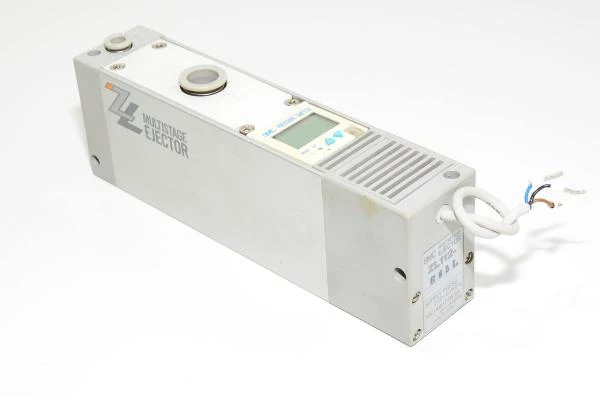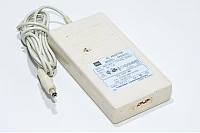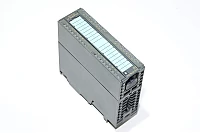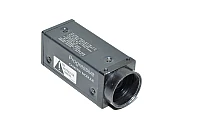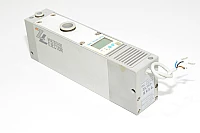SMC ZL112-E65L multistage ejector with 1,2mm nozzle, 24VDC ZSE4 digital vacuum pressure switch
- Manufacturer:

SMC - Model:
SMC ZL112-E65L - Dimension:
180 x 36 x 69 mm - Weight:
431 g - Availability: 1pcs
- Condition: Used
-
Price Including VAT: 156,88€
- Ex Tax: 125€
Versatile multistage vacuum ejector unit.
Vacuum ejector is basically a device, which operation relies on Venturi-effect to produce vacuum. Suction is produced with a combination of narrowing cone shaped jet nozzle and a receiver nozzle. Between those nozzles is intentionally left a small gap, which connects to the suction line. Vacuum ejector operates with the compressed air supplied to the jet nozzle and due to it’s narrowing flow path the air speed is accelerated. This air flow is accelerated up to 5x the speed of sound and it is shot out of a narrow jet nozzle into the large funnel shaped receiver nozzle. Since the receiver nozzle has a funnel like structure the fast air flow has a room to expand and because of this expansion the pressure drops, and the air flow sucks up additional air through the gap, from the suction port. From here both air flow mix and propel out from the ejector through the exhaust port, which depending on the model and configuration may have or not have a silencer present.
Typical vacuum ejector operating functions and adjustments
Plain simple ejector does not have any adjustment functions. It’s just air in, suck it up and air out. Some ejectors might have one or two solenoid operated valves in them. By actuating first you get the suction on/off and the second solenoid provides release air flow. In some energy saving ejectors the same suction valve actually cuts off the suction tubing allowing the generated vacuum to stain the the suction lines. This ability can be utilized in order to drastically lower air consumption by shutting off air flow when sufficient suction is archived. If there is a small leak present the vacuum pressure switch makes sure that the ejectors adds up the vacuum after preset threshold is breached, before the part drops. On a contrast conventional non-vacuum switch operated ejectors just keeps on wasting air as long as it has to keep the suction on. Integrated or auxiliary vacuum pressure switch can be used to control one or more ejectors and/or even send a signal to PLC in order to signal that sufficient grip has been reached and we are ready for liftoff. Additional adjustments typically found on ejectors can be found in form of adjustable needle valves for adjustment of suction air flow and blow-out air flow.
A couple of key things:
- The larger the ejector nozzle, the larger overall air consumption.
- If handling smooth surfaces, prefer to use ejectors with pressure switch operated energy saving valve configuration. This saves you a lot of air in the long run.
- Size applications in a way that the handling can be done at half of ejector’s max vacuum level
- In order to decrease air evacuation time use ejectors with larger vacuum airflow
- Single stage ejector or multistage ejector?
- Single stage one is cheap, simple, small, has nozzle specific suction flow curve
- Multistage one is more expensive, a bit more complex, higher efficiency, larger, can combine multiple nozzle size suction flow characteristics ie large air flow at low vacuum level and still having a capability of reaching high vacuum pressure
- Run ejector at optimum supply pressure:
- Too low = not enough performance and efficiency drops.
- Right amount = sounds good.
- Too much = No significant gain in suction air flow and max suction pressure. You just waste more air through exhaust.
- Recommended to be used with suction air filter
Typical vacuum ejector application examples:
- Gripping various objects with suction cups, pads etc
- Providing a source of vacuum in chemical reactors
- Generating a vacuum for vacuum molding process
- Vacuuming air out from glass fiber or carbon fiber molds with the help of a special vacuum molding bag or special vacuum molds
- Mixing gases (who knows, perhaps this works especially well in some special application)
- Creating a distributed vacuum system, which is as close as possible to the suction application and is operated solely when needed
Vacuum unit's technical information:
- Vacuum Module Function:
- Venturi effect based multistage (3-stage) vacuum ejector
- Nozzle size:
- 1,2mm
- Max vacuum pressure:
- -84kPa.
- Max suction flow:
- 100Nl/min
- Max air consumption:
- 63l/min
- Vacuum switch operating pressure range:
- 10kPa...-101kPa
- max 200kPa
- Supply pressure:
- 0,2...0.5MPa
- Optimal 0,4MPa
- Max 0.7MPa
- Hysteresis:
- Adjustable
- Vacuum pressure sensing:
- ZSE4-00-65-X105 digital vacuum pressure switch module
- Wiring (PNP output)
- Brown +24VDC
- Black load (connect load between black wire and GND)
- Blue GND (-)
- Vacuum pressure switch cable will vary from unit to unit (be prepared to extend the cable)
- Wiring (PNP output)
- ZSE4-00-65-X105 digital vacuum pressure switch module
- Energy saving valve operation (vacuum is left into the suction port when vacuum valve is closed):
- No
- Release air flow enabling valve:
- No
- Vacuum enabling valve:
- No
- Exhaust port:
- Integrated silencer
- Vacuum line filter:
- Yes, integrated
- Connections:
- V (Vacuum port):
- 10mm quick fitting
- P (Air pressure supply port):
- 6mm quick fitting
- V (Vacuum port):
- Adjustments:
- Blow off air flow adjustment with needle valve screw
Download SMC ZL-series multistage vacuum ejector technical datasheet
Download SMC ZSE4B and ISE4 series pressure switch installation and maintennance manual
Download Festo basic principles of vacuum technology, brief overview
Tags: vacuum ejector, vacuum, vacuum switch, ZL-series, VJ114, pressure switch, ejector, SMC, 24VDC, NC, suction, multistage ejector
Recently viewed
Price Inc. Tax: 156,88€ Price Ex. Tax: 125€
Availability: 1

